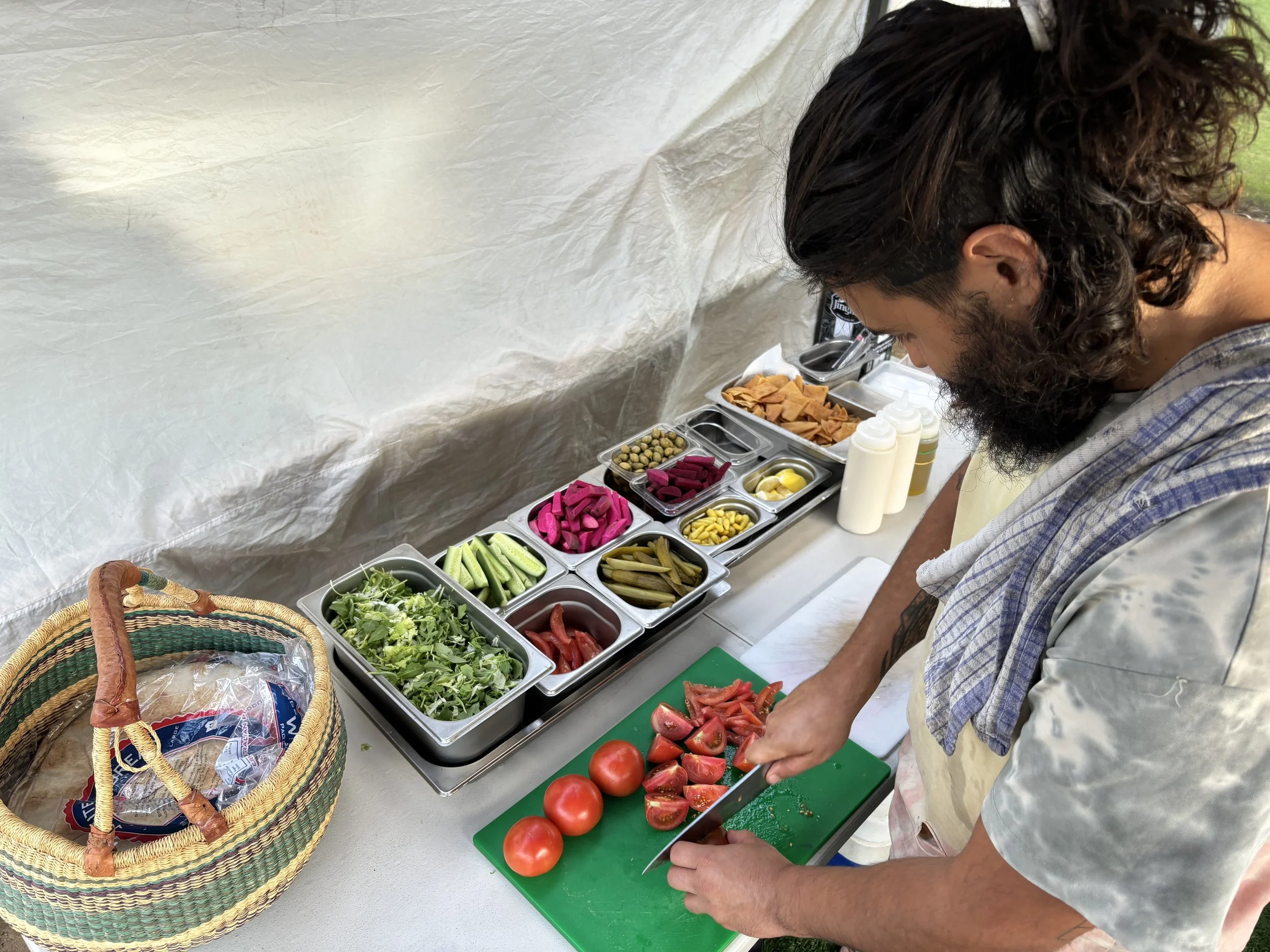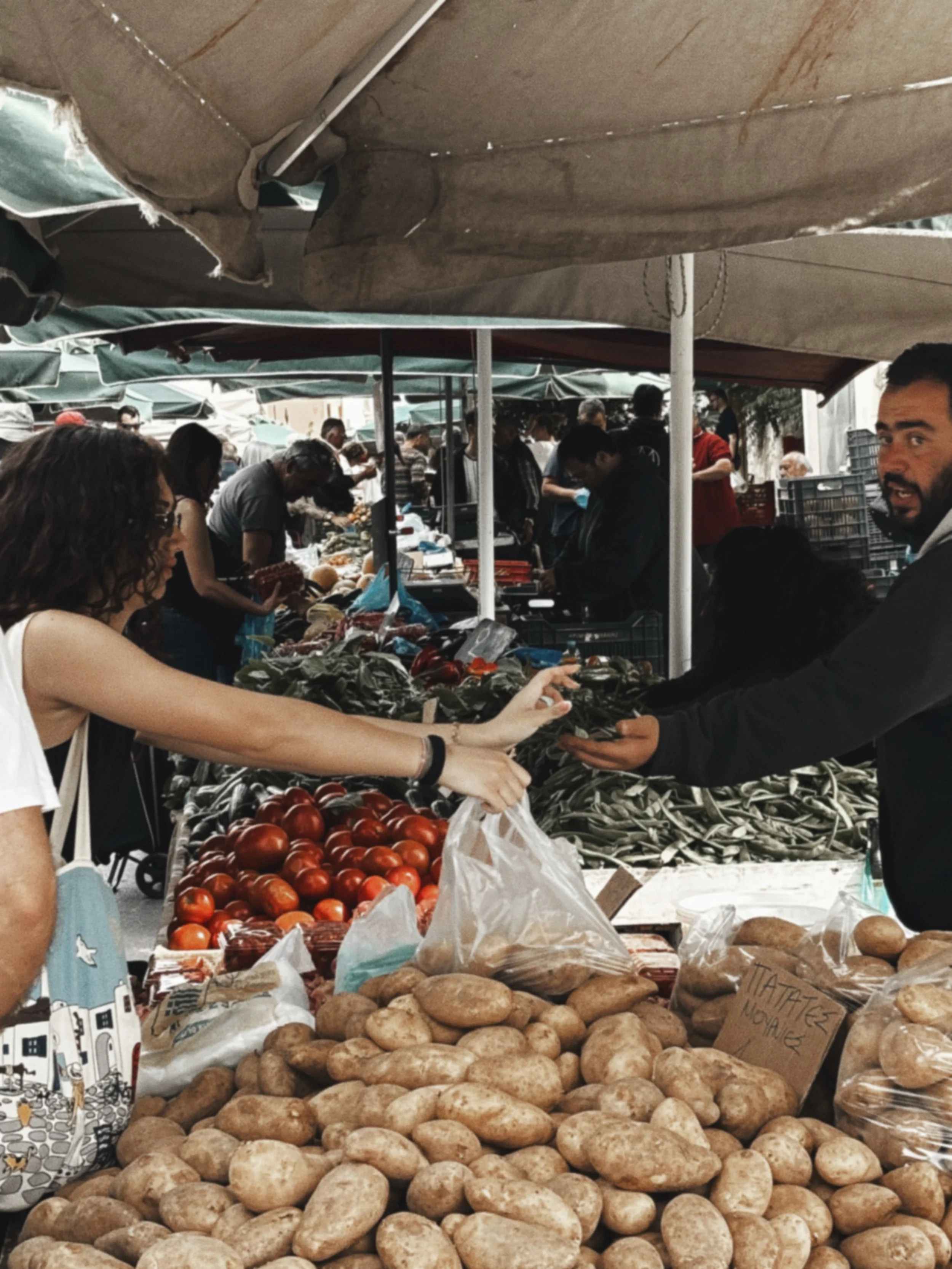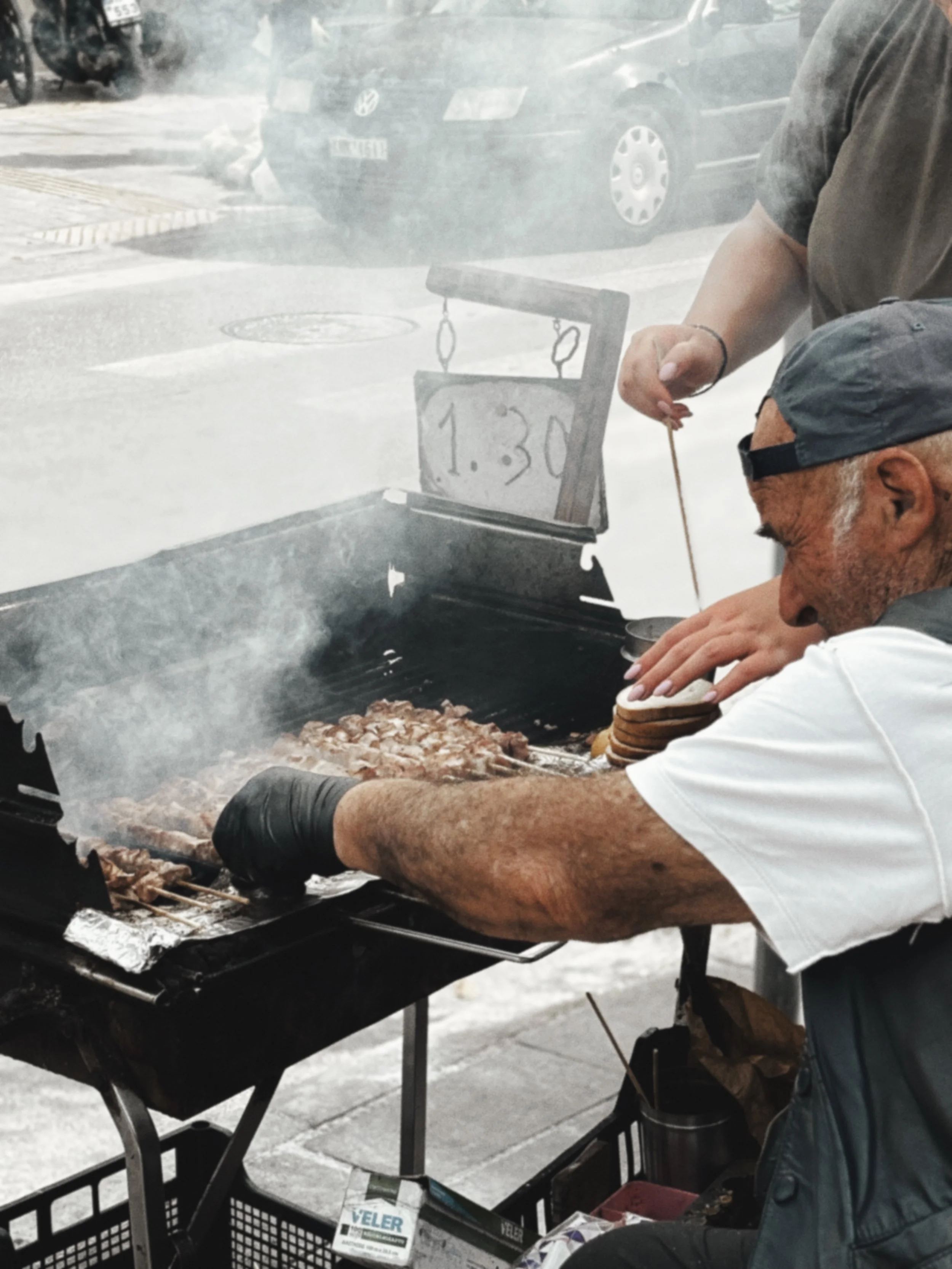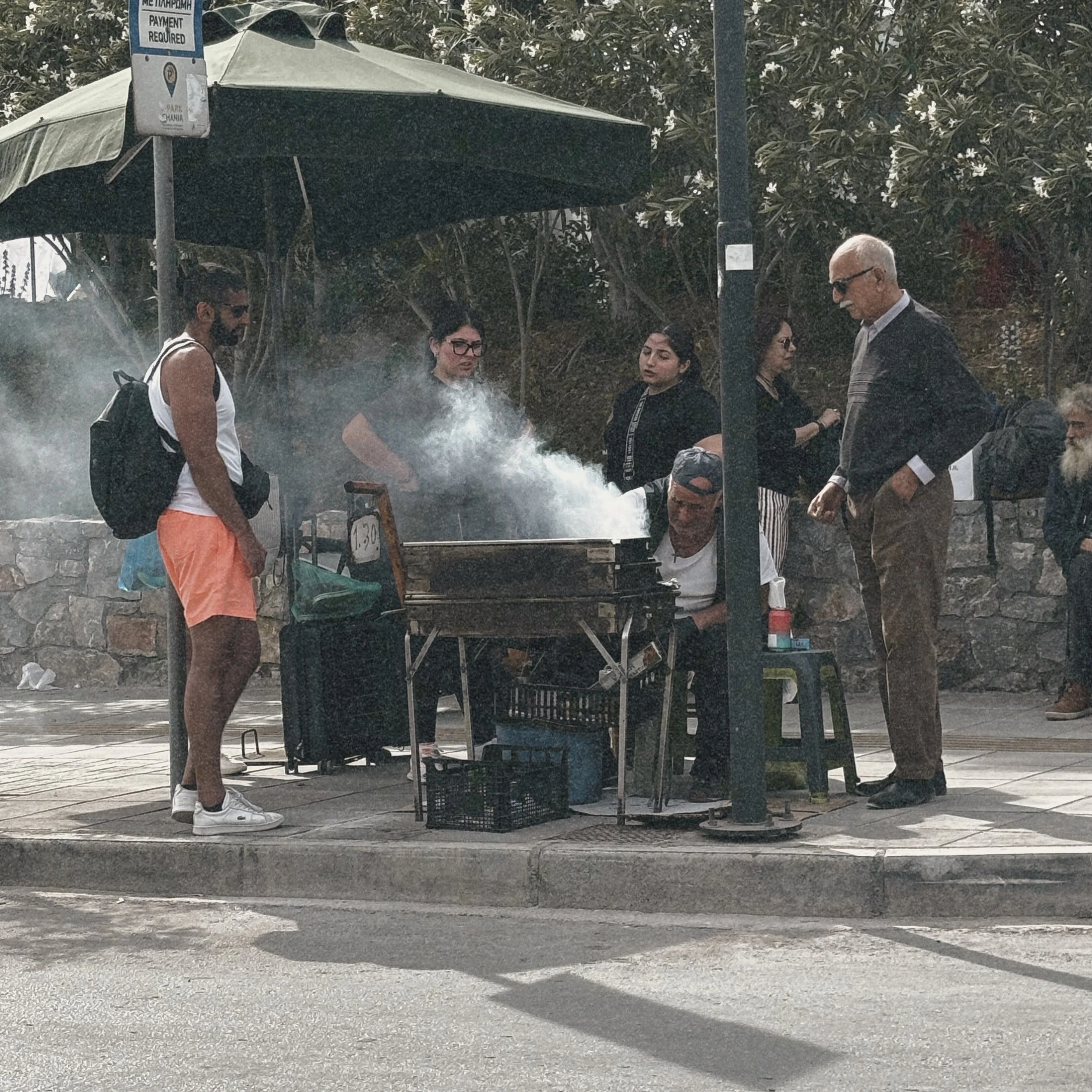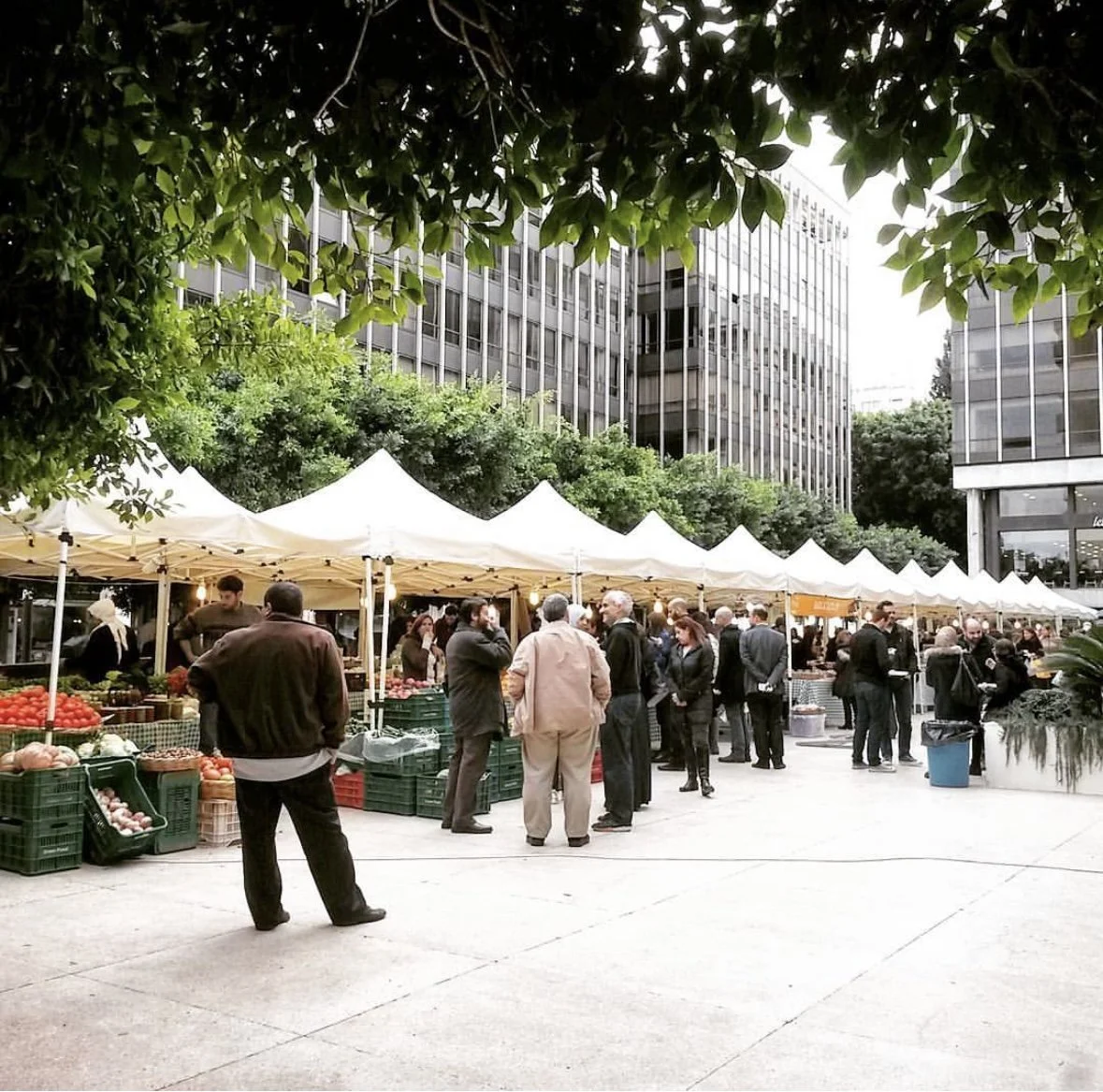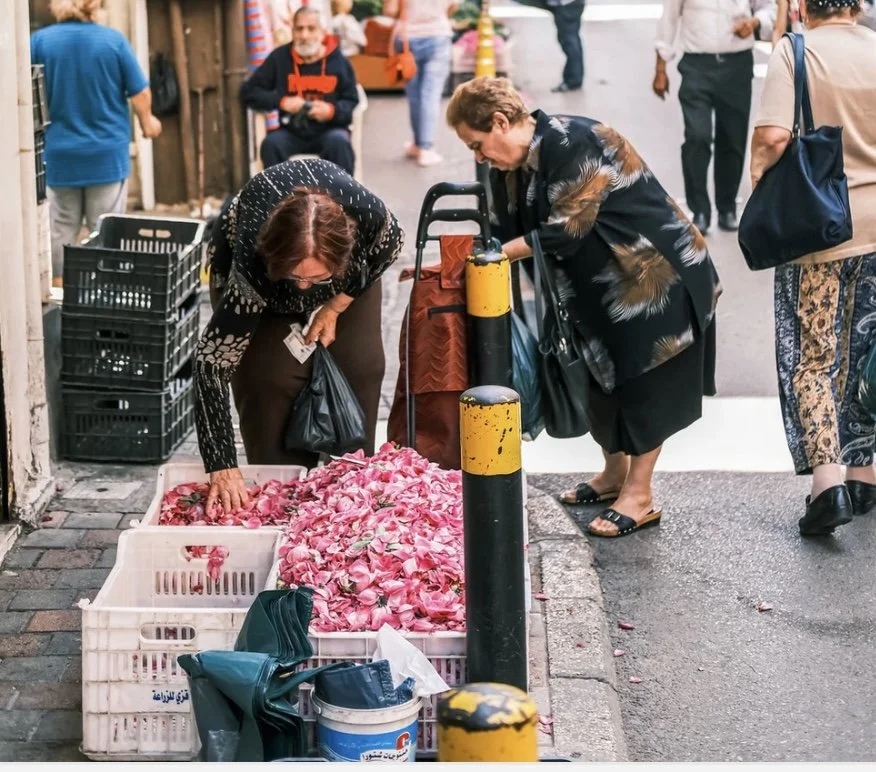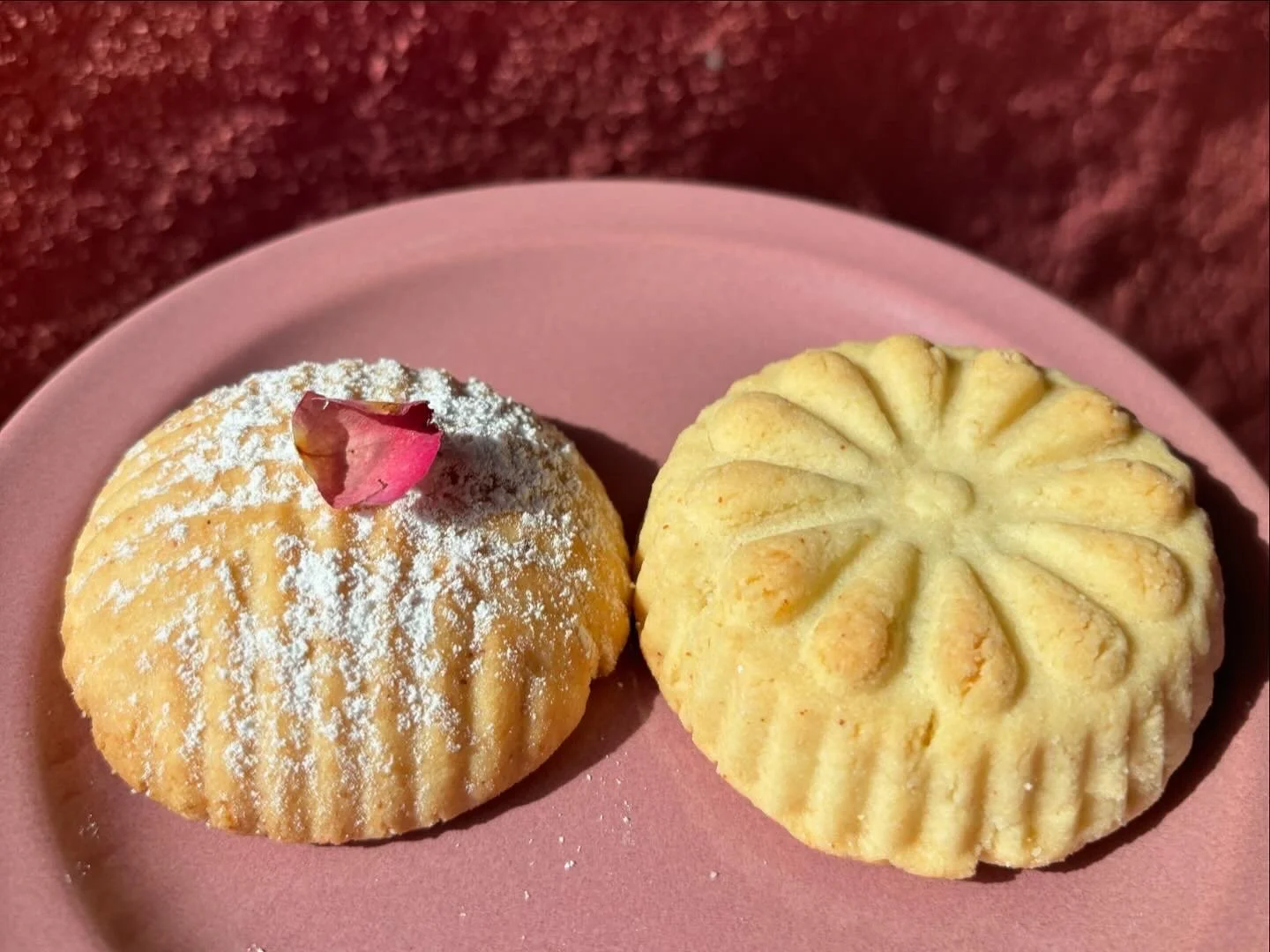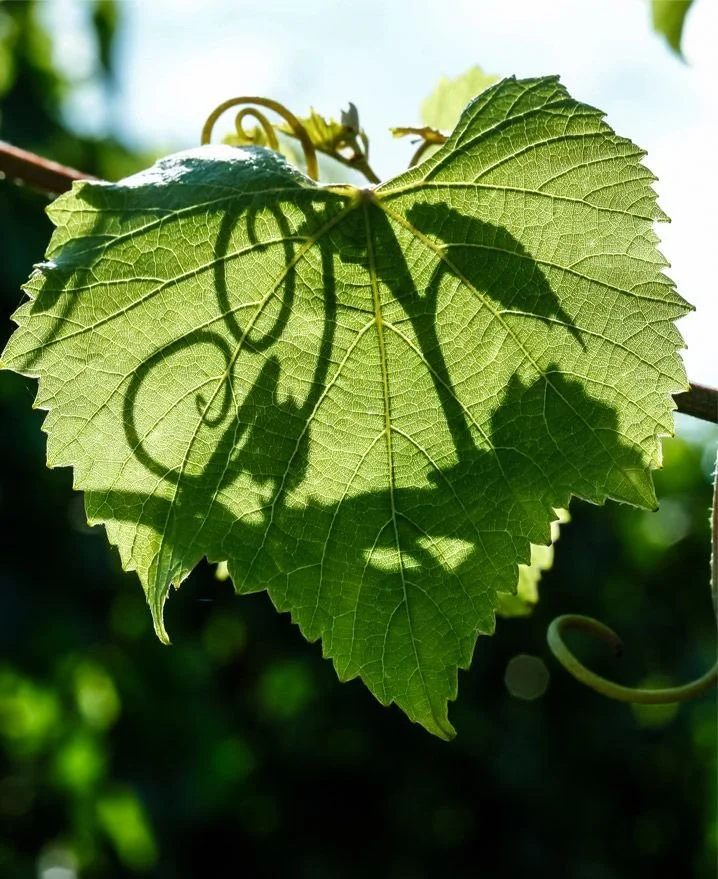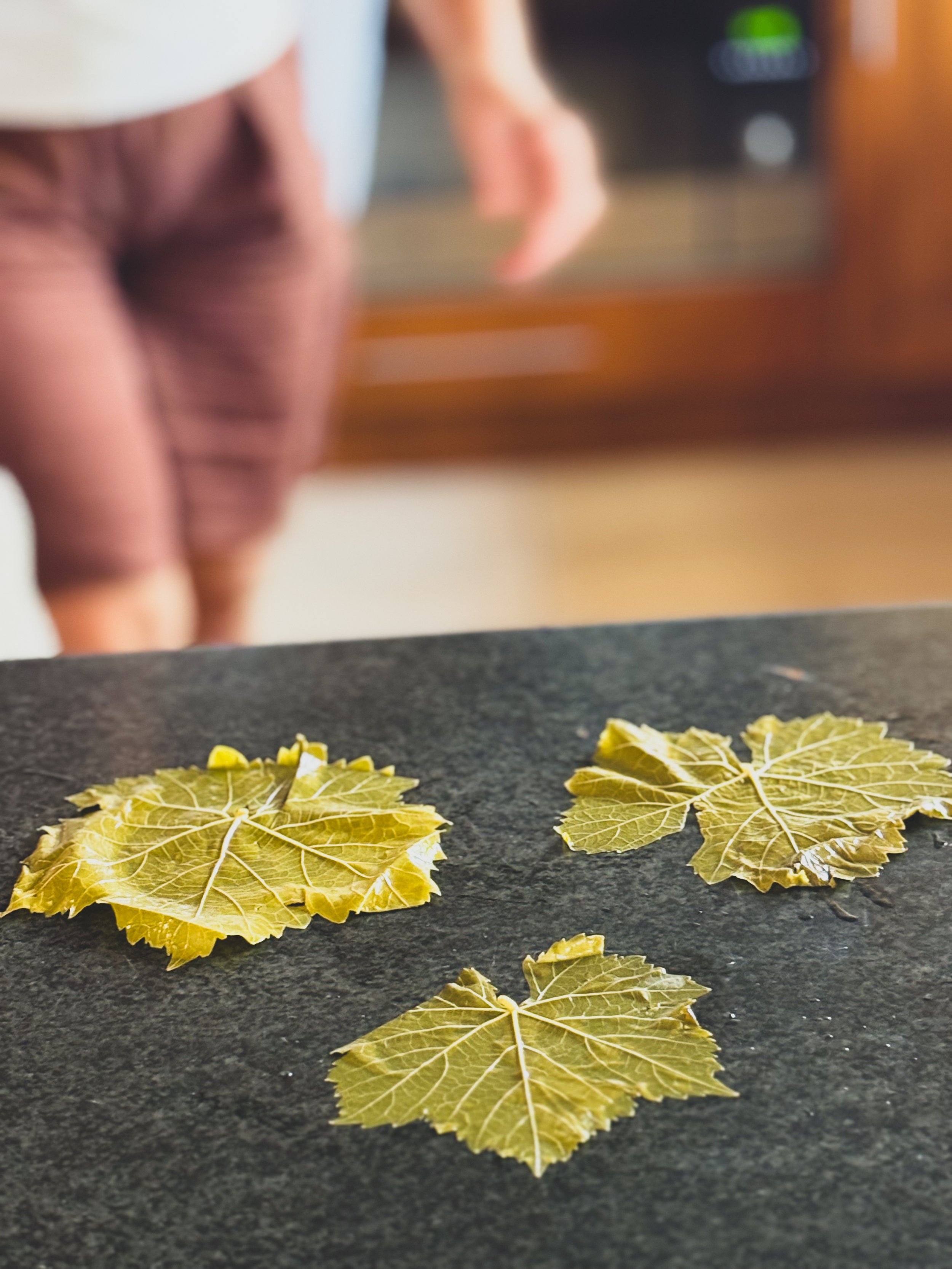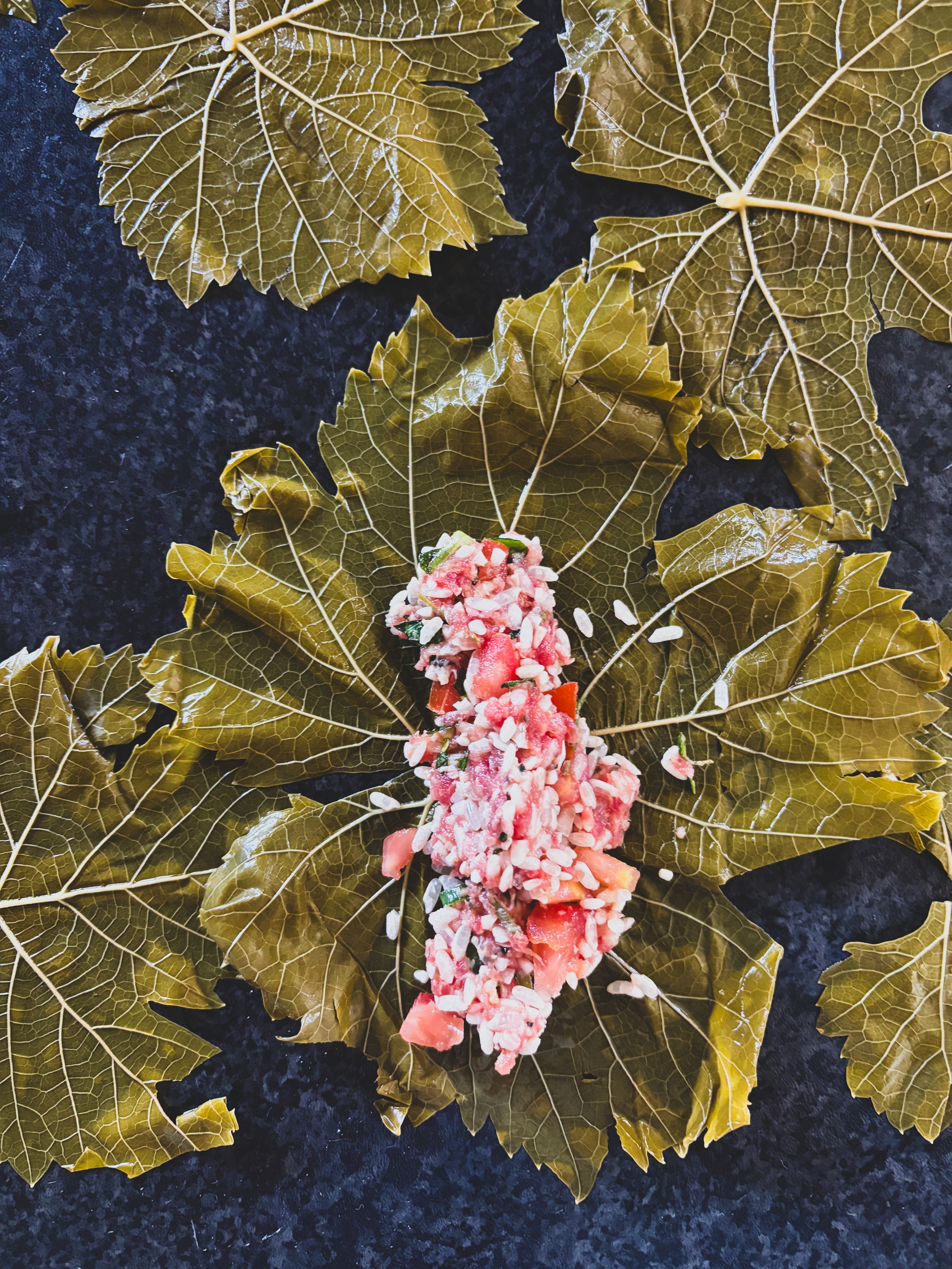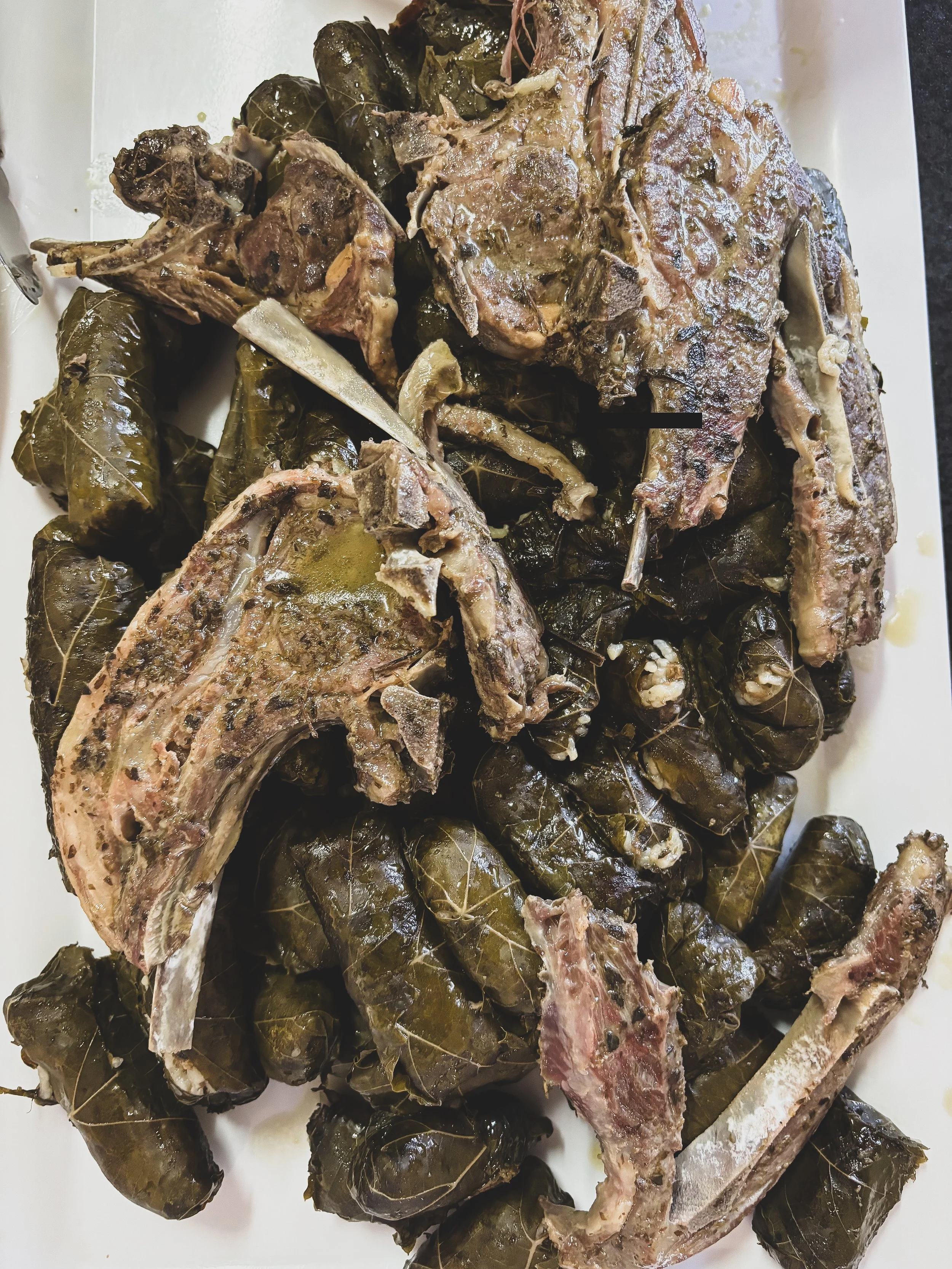Farmers Market
Each week we set up our Lebanese Street Food stall at the Fremantle Farmers Market. We arrive in the dark and bang in the tent among a huge list of other stall holders, some of which have been there since three am preparing their massive array of fruit and vegetables.
Quite often someone will comment on the weather and let you know if you should put up the awning for the rain, or use the tent pegs for the wind or have extra water for the forty degree day ahead. It’s the Sunday morning ritual of arranging all the weeks mouneh along the trestle table - vibrant orange, purple and pink pickles gleaming in the morning sun. It’s the hummus jars and toum, fragrant ma’amouls and the weeks specialty desert.
Joey fires up the pizza oven and chops the fresh produce from Margaret River Fresh for the days felafel wraps. We chat with the regulars who sneak in before the offical opening time and we get a much needed coffee from the coffee shack before service. Working here has become more than just a job, it’s a way of life.
Mis en Plus
The Fremantle Farmers market is one of the most cherished Sunday rituals in Fremantle for locals and visitors alike. This is a place that invites you walk around, sample free tasters, listen to local music, bring the kids or just be out in the weather and enjoy handmade products and local produce- the best in our state. If you are facing financial hardship, these markets are one of the only places in Fremantle that welcome all members of the community equally (on a regular basis), a free place to walk around, no purchase necessary.
Farmers markets are one of the last examples of communities gaining control over their economic lives, and stall holders are more than just business enterprises, but rather an opening to stories, histories, recipes, culture, debate, politics and community. Gone are the days of social style voting, hanging out at the tavern at uni & lingering in public spaces without a smart phone for a distraction. We’ve segregated and isolated ourselves and it creates such a huge disconnect in our society. The farmers markets offer a space for people to come and connect, talk or just feel like they can sit on the grass and watch the music.
Not only do farmers markets help us reconnect to each other but it is also the one rare wild card left in this world increasingly dominated by food globalisation and corporate greed. You can’t ask someone in the large chain supermarkets what the best in season produce is to buy that day or to what human effort it took to grow the food or where even most of the produce is sourced. Or maybe we should start asking them these questions! Farmers Markets offer a space to learn and exchange knowledge about the produce, the items of clothing made, perfumes, drinks and food on your plate.
The stalls you frequent each week become openings for story sharing and cultural exchange. I am constantly blown away by the support and gratitude we receive from our customers who are always keen to try the hummus, ask questions about the food, learn about Lebanese culture and its origins and traditions.
In turn, this has made us, the stall holders, hungry to learn more about Lebanese street food and what it has to offer. So much so that this year we travelled to Greece and Lebanon to visit farmers markets in Beirut and Chania. We went to learn more about the produce of the Mediterranean and the Levant, taste the street food, mouneh, hospitality and traditions that have been practiced for centuries.
Local Laiki in Chania
These markets in Chania (pictured) have been running since 1913, way before supermarkets. The stall holders roll down from the white mountains of Chania with their stunning produce, cheeses, honey and snails - but the vendor that captured our hearts the most was the smokey souvlaki stall. Hunched over a tiny charcoal bbq, this Cretan was cooking his meat sticks and toasting white bread on a Saturday morning by the side of the road, calling out to his daughter to bring more meat from back of his beaten up car. Real Cretan style. The flavour of the Souvlaki was amazing, mostly because the spirit was truly authentic. This scene was pure theatre as he shouted in Greek, flipped meat sticks, toasted the bread and served this one euro thirty market snack to his road side customers.
I love how these farmers markets bring together tradition with current lifestyles. In Lebanon we witnessed the same at Souk El Tayeb in Mar Mikhael with the vast array of Mouneh (preserves) on show. This market is a social enterprise that promotes the culinary traditions of the Lebanese people. Here we gained so much inspiration behind all the different types of pickles & the genuine friendliness and passion of each stall holder. They truly love what they do in keeping the Lebanese food culture and traditional practices alive.
image of Souk el Tayeb in Hamara by Karim Sakr
Image by Karim Sakr: a Beirut photographer who also sells his prints at the Souk and online
Lebanons recent economic crisis has forced food makers to create local variations of previously imported products. This is the tradition of Mouneh. Historically, through times of political unrest, war or famine, the Lebanese would preserve whatever food was available so it could last the longest period of time without spoilage. Here at this market this tradition is alive and well. You can find traditional items such as labneh, makdous, variations of pickles as well as newer experimental products like lentil cookies, apple syrups and chocolate zaatar mix. This market is a hub of culture, everybody is so passionate and engaged with the produce they are selling and products they have created. There is no pressure to consume, but instead people come to learn, share and be part of the community and Lebanese way of life.
Lebanon, with its high cost of living and economic inflation relies on markets such as these to preserve its culture and make it accessible to the whole community. Like the Fremantle Farmers Markets, people come here to talk and be with each other as much as they are there to eat and shop.
Fish monger selling his catch from baskets - Image by Karim Sakr
Image by Karim Sakr
We bundled up all this new inspiration from both farmers markets in Chania and Lebanon and took these ideas back home to carry on the traditions and spirit of the Creten Laiki and Lebanese Souks.
It’s a radical act having a market stall, it’s a way of supporting yourself and really flipping the bird at large corporations who are trying to drown out small businesses. Being part of the Fremantle community, creating our food from scratch and with heart, holding culture and family traditions close and sharing it with the wider community is a rare and special service and one we are immensely proud of at our food stall. Being held by the farmers market is special and an example of communities taking control over their lives -
“Voting with their dollars and their feet to support local artisans and local agriculture.”
Robinson and Hartenfeld
Farmers markets are so important because they help people reconnect with the environment, food, culture and most importantly with each other.
Heritage Baking: The Ma’amoul
Rose water, orange blossom, mastic, mahlab, semolina, ghee, sugar and sweet time. The magic of the Ma’amoul not only resides in its list of aromatic ingredients but also its cultural significance - usually prepared for religious rituals such as Easter or Eid.
Ma’amoul are prepared throughout the Arab world and include ingredients that originate across the Mediterranean & all throughout the Middle East, North Africa and the Levant.
Mastiha comes from the Mastic tree on the island of Chios, Greece. A small incision is made into the tree whereby thick sticky tears shed and over 15-20 days chrysalis into irregular jewel like shapes.
Rose Water comes from Damascus rose petals which are picked and distilled among villages all over Lebanon. Within the Bekaa valley is a large plantation whereby a Syrian family have created a farm of flowers from the seeds they brought over from their home country. They harvest the rose whilst it’s still asleep (as to hold its fragrance) and send the petals off to be distilled.
Orange Blossom come from the vibrant white pearls of the bitter orange tree and are distilled into orange blossom water; a celebration of spring & new beginnings & created all throughout the Levant.
Mahlab is a spice produced by the seed kernels of the mahlab cherry tree and used for centuries throughout the Middle East and Greece. Its flavour is a combination of almond and cherry and comes in a powdered form.
Making Maamouls is heritage inspired baking, perfected and passed down through families for generations. In Lebanon these semolina biscuits are moulded and decorated by hand in wooden moulds called a tabe.
Out here in the diaspora, Joey visits the Perth Lebanese Baker in Welshpool to collect these ingredients to make Ma’amouls for the Farmers Markets. The beautiful Lebanese woman working there tells him of how she makes her Ma’amouls late at night by placing a plastic sheet on the floor and tapping her tabe whilst everyone sleeps.
Below is the recipe for date Ma’amouls, and you too can find all the ingredients at the Perth Lebanese Bakery along with the tabe mould and different fillings. The recipe below focuses on the date filling, however you can try the pistachio, walnut or go crazy and invent your own. Or failing that, come find us at Subiaco Farmers Market or Fremantle Farmers Market every weekend for your Ma’amoul fix.
Sahten!
left is the walnut, right is the date
DOUGH
500g course semolina
500g fine semolina
100g all purpose flour
1/4 teaspoon mastic
150g sugar
1 teaspoon mahlab
1/2 teaspoon instant yeast
400g ghee or butter
1 tablespoon orange blossom water
1 tablespoon rose water
icing sugar for dusting
DATE FILLING
500 g date paste
2 tablespoon ghee or butter
2 tsp cinnamon
To make the dough combine both semolinas and flour in a large mixing bowl. Crush mastic in a mortar and pestle with a table spoon of the sugar until fine. Add it to the bowl along with he rest of the sugar, mahlab and yeast. Use your fingers to add the soft butter or ghee until it looks like fine breadcrumbs. Add both rose and orange blossom waters plus a tablespoon or so of water if still too dry. Kneed dough until all incorporated and you have a firm product. Usually takes about 10-15 minutes depending on the weather. Leave at room temperature for 3 hours.
Preheat the oven to 180C and line your baking trays
Combine date mix with butter and cinnamon
Roll about a tablespoon of your dough into a ball and flatten it out in your palms. Place a teaspoon of the date mixture (rolled into a ball) in the centre and fold the dough over your filling and roll again between your palms to evenly case the filling. Take your tabe and press the ball into the mould until it’s evenly spread. You can add a bit more dough if needed. Slam the mould onto the tray so it comes out and continue. Once your tray is filled, place in the oven for 20 min or until lightly golden on the bottom of each ma’amoul. Cool on wire racks and store in an air proof tin.
Warak Enab
this is a practice run
From the mythical land of cedar and pine, peace and war, wine and blood, Warak Enab is a recipe from the ancient past and a love letter to eternity.
This is not a simple recipe card but instead a song from Lebanon and the matriarchs that have rolled this dish all over the world. Wardi Touma shared this recipe with us who intern learnt it from her mothers hands, mother in law, aunts and ancestors.
I stress that this indeed is a song, because within this recipe we hear the music of the vines through ancient veins, of leaf, of hands, of the past to the present day where we can all share the gifts of this magnificent cultural artwork - Warak Enab.
“And in the autumn, when you gather the grapes of your vineyard for the winepress, say in you heart, I too am a vineyard, and my fruit shall be gathered for the winepress,
And like new wine I shall be kept in eternal vessels.
And in winter, when you draw the wine, let there be in your heart a song for each cup;
And let there be in the song a remembrance for the autumn days, and for the vineyard, and for the winepress.”
Gibran Kahlil Gibran
We recently spent New Years day at Joey’s family home in Coburg. On the front next to the entrance reads a plaque - Beirut & Goiania. This is a homage to each respective home of Joey’s parents who both immigrated to Melbourne from other sides of the world, Lebanon and Brazil.
In Wardi’s kitchen are gifts from the garden, fresh herbs and fruits, vine leaves & flowers; offerings from a plentiful summer garden. We have come for a new year, we have come to connect, we have come to roll Warak Enab.
* please note that this dish is not measured in cups and grams but rather through memory and heart. Wardi used a mug and we roughly pieced together the weight of the rice and beef. Its not important to be accurate, and this rough guide is all you need. Taste your way through and sing the song of the vine.
Rice mixture
Grape vine leaves/ fresh or sourced from a good Lebanese or Greek grocer
2 mugs medium grain rice
1/2 kg beef mince
3 fresh tomato’s
5 Spring onion
Fresh Mint
Fresh Oregano
Fresh Thyme
Fresh Parsley
Olive oil
Salt and pepper
5-6 lamb chops depending on the size of the pot
Grape leave
If you have a grape vine, pick your leaves fresh and give them a wash. Then cover with boiling water to blanch them, ready to be worked.
If you are using jared leaves then proceed to line them up so the biggest are filled first
Mix the rice, 1/2 kg of beef mince, diced tomatoes, chopped fresh herbs ( amounts I’ve left up to you, we used a generous handful of parsley and a small handful of the rest) a good glug of olive oil and salt and pepper to taste. Mix together with clean hands.
Base of the pot
Line the pot with lamb chops.
Coat the chops on both sides with salt and oregano
You can brown the chops off to seal the meat but also fine if you just keep it raw.
Spread leaves out.
Vein side facing up towards you ready for its offering of rice, shiny side out to display its glossy leaf to your guests
If the leaves are too small you can put two small ones to overlay each other
Roll big ones first and put on bottom of the pot around the chops
Roll each leaf twice then tuck the sides in and roll firmly but not so much that it tears. If you have a tear in your parcel, don’t worry, just mend it my ripping another leaf to repair the area.
Stack them up, smallest on the top
around the chops until you have no more mixture left.
Cover with water just half way filling the top parcels
Add lemon & olive oil
Bring to the boil and simmer with lid on till cooked
Smells covering the room
When all the water has evaporated and the top parcels are fully cooked through- it’s ready.
Leave for 10-15
To serve you need a plate big enough to cover the rim of the pot so you can flip it over so the bottom becomes the top and chops are on top to serve
This dish is to be accompanied with fresh yoghurt alongside your other favorite dishes
Sahtein!!

